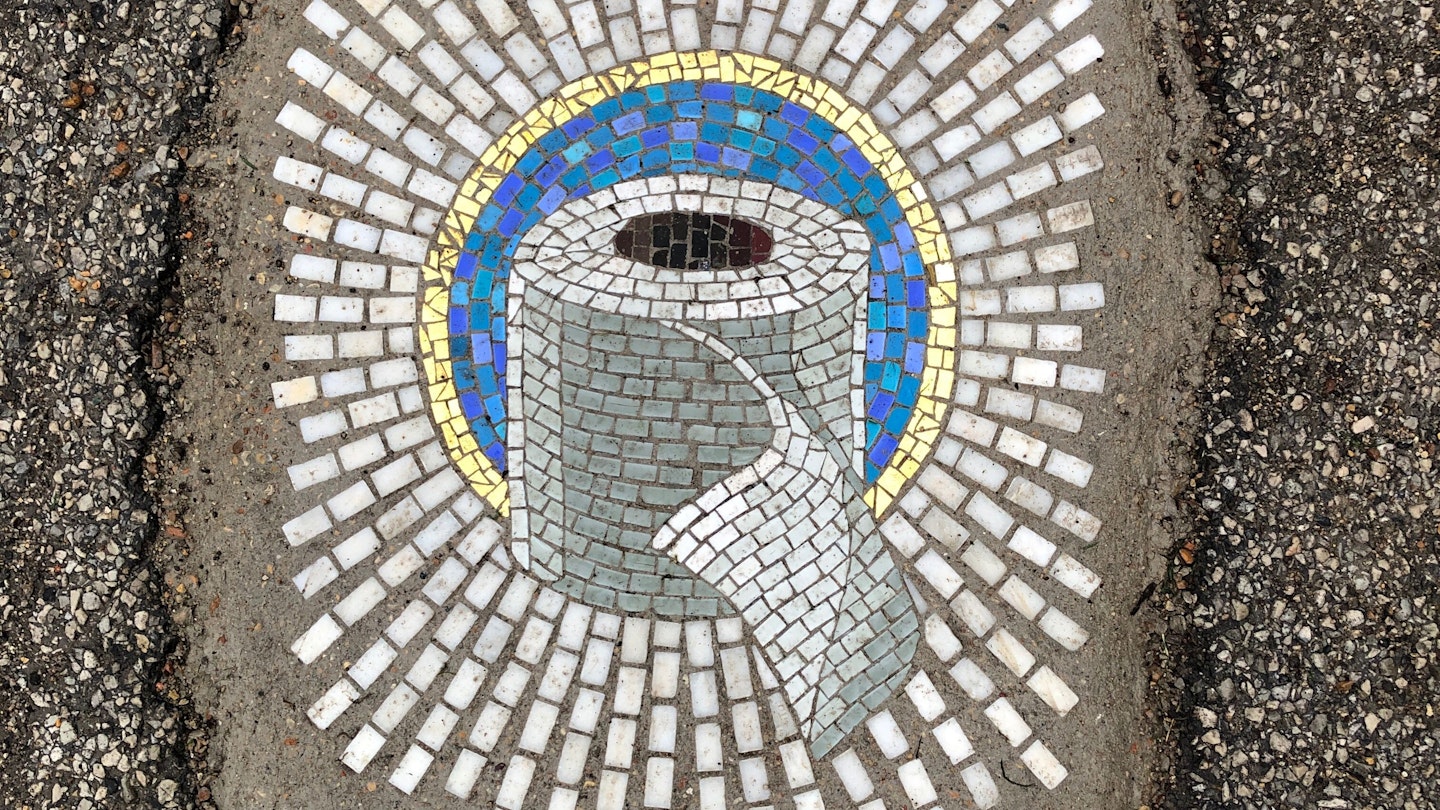There are fewer people on the streets of Chicago today than there were before the COVID-19 pandemic arrived in Illinois; however, there are more mosaics. For the past several years, local artist Jim Bachor has been sprucing up potholes in the Windy City with fragments of functional, unexpected beauty by filling in the gaps in the pavement with his art. Now he has a new array of work in the Uptown neighborhood that calls attention to the totems of the coronavirus era.
The new mosaics feature a can of Old Style lager, a roll of toilet paper, a bottle of hand sanitizer, and a hexagram, all outlined with colorful nimbuses and radiating white lines that evoke religious iconography. Similarly, they draw from his earlier work, which has highlighted colorful, soft subjects like bouquets of flowers that stand in stark contrast to the surrounding pavement.

“The ‘Holy Trinity’ series tries to humorously point out some of the absurdities the virus has brought out in us humans,” Bachor noted. “‘Worshipping’ toilet paper and hand sanitizer, all while increasing our alcohol consumption. Perhaps the series will bring an unexpected grin to the face of an unsuspecting viewer during these dark times.”
It was travel that led Bachor to his preferred medium. On a 1998 trip to London, Rome, and Paris, the graphic designer fell hard for mosaics. He returned to Rome, Greece, Turkey, and Pompeii repeatedly to learn more about these artistic pieces which are often embedded in cities’ urban fabric. Additionally, he started creating his own mosaics and was inspired by a perpetual pothole in front of his home to use his art to tackle a widespread problem.

“An ancient mosaic looks exactly as intended by the artist who produced it over two millennia ago. What else can claim that kind of staying power?” Bachor expressed reflectively. “Beginning in May of 2013, I began to apply this thinking to the numerous potholes filling the streets of Chicago. Temporarily fixed over and over again by city street crews, I aimed to apply this resilient artwork as a more permanent solution.”
Bachor’s egalitarian approach to art applies not only to his perspective on his work but also to the current events that inspired his latest series. “These are tough, uncertain times and there’s nothing funny about it,” he commented. “The virus affects us all – rich, poor, young, old – it doesn’t matter who you are. You can’t buy your way out of it; you can’t run away from it.”

Over the past seven years, Bachor has created 85 art installations throughout not only Chicago but also across the US and around the world. Like other street artists who work on public surfaces and whose formats don’t easily lend themselves to private sale, part of the joy lies in discovering Bachor’s work in the wild, whether intentionally or while strolling through the city.
“Finding my work in the street is akin to an Easter egg hunt, accompanied by a surprise when you find it. I believe this applies to public art in general, with pieces that suddenly appear in unexpected locations,” Bachor stated. “Art can bring a little joy, a little pleasure, and a little wonder to people during these dark, unsettling times.”




